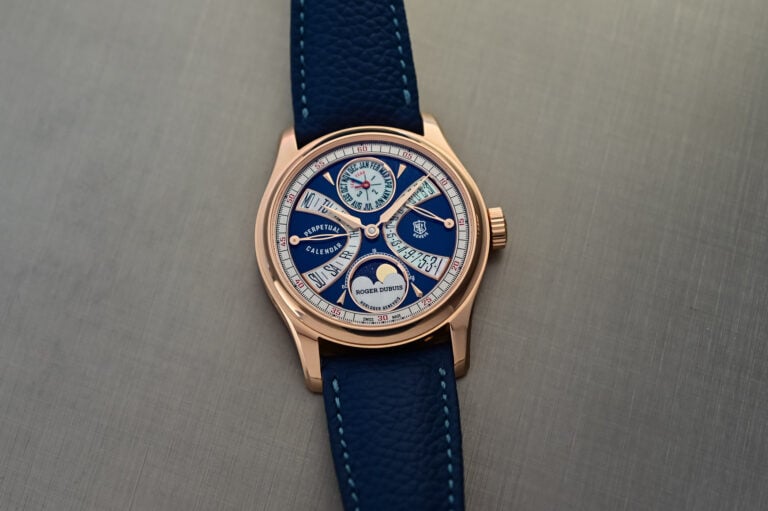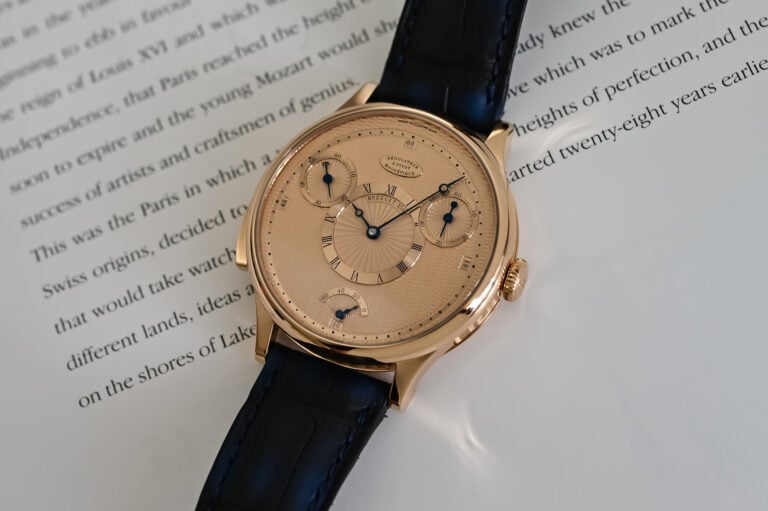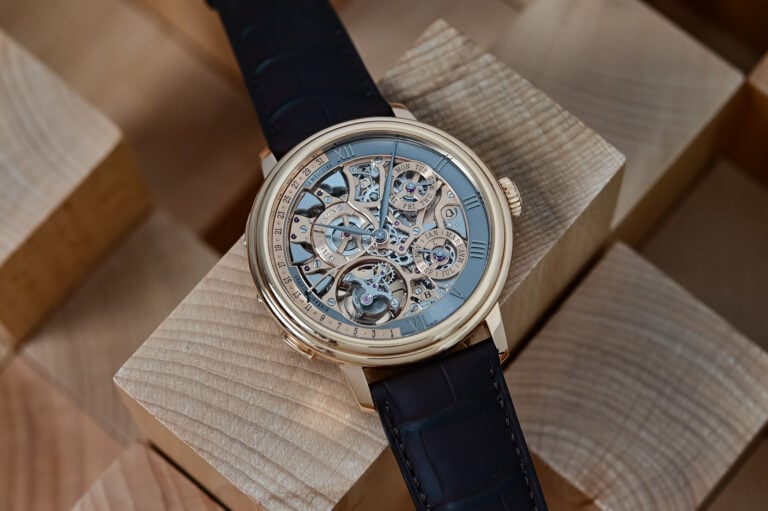A flat spiral spring within the balance wheel of mechanical movements that allows it to oscillate at a consistent frequency, controlling the accuracy of the watch. Also known as a hairspring.
A precisely weighted wheel inside a mechanical movement that rotates back and forth with regulation from the balance spring, similar in function to a clock’s pendulum. Each swing of the wheel advances the gear train, which subsequently moves the watch hands.
A cylindrical container in mechanical movements that houses the coiled mainspring, which provides power to the timepiece as it unwinds. A ring of gear teeth on the barrel connects to the first pinion of the gear train. Barrels can be linked in parallel or in series for greater power reserve and more stability in torque.
An angled surface that isn’t perpendicular to its adjacent side, such as milling away the 90-degree corner of a cube to create a slope or ramp. This is usually done to the edges of watch parts to enhance aesthetics. This is also known as Anglage or chamferring.
An external ring on a watch that surrounds the crystal. It can either be fixed or rotate to provide additional functionality, such as measuring air time on dive watches. Some rotating bezels are internal (under the crystal), usually controlled by a second crown on the watch case.
‘Compax’ refers to the number of complications, not the number of subdials. That’s a common mistake, however, since it’s so common, most people will call a chronograph with two sub dials (one for the running seconds, one for the elapsed time) a bi-compax. An actual bi-compax could for instance be a chronograph with date function.
A rotating bezel that surrounds the watch crystal and can turn in either direction. This usually refers to external bezels on dive watches, but can also be applied to internal rotating bezels (under the crystal) if it also turns in both directions.
A variation on traditional polishing where a steel component is polished to a perfectly even mirror-like finish. When done right the component looks evenly deep black from certain angles, explaining the term. It is achieved by first sanding and then polishing the part (most commonly screws or bridges) against progressively abrasive materials and finally a tin block or tool. It is an extremely labor intensive process, usually reserved for only the finest of watches.
A color effect achieved by either heating or chemically treating steel, usually done to screw heads and watch hands for aesthetics. Heat treating can be done in an oven or by hand with an open flame, creating a thin, blue oxide layer (which also protects the metal from corrosion).
A metal strap (or other solid material such as ceramic, wood or carbon fibre) on a wristwatch.
Structural part of a movement that attaches to the main plate to complete the overall frame.
A technique where a component is finished by brushing it with an abrasive tool, creating a pattern with fine lines. Various types of brushing exist, but most common are straight or linear brushing, circular brushing or sunray brushing. This technique can also be referred to as graining.



